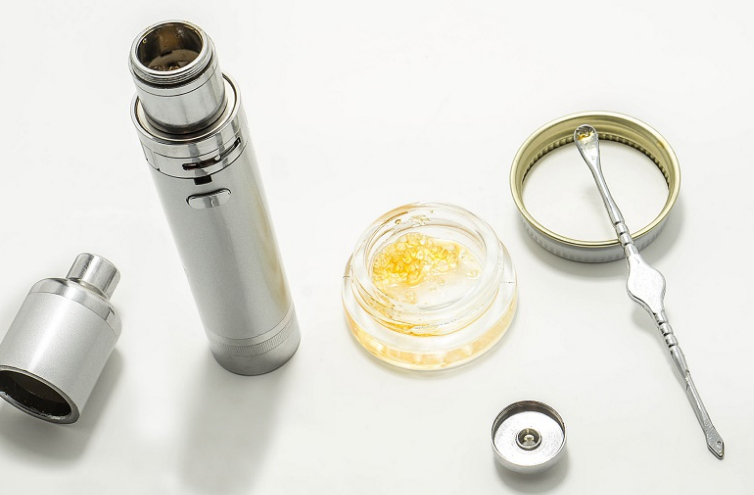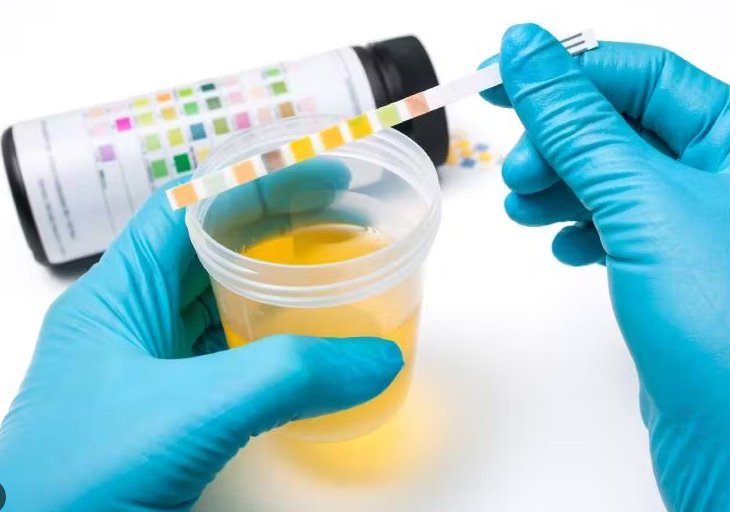No, scientific analysis of vape liquids has consistently shown no presence of urine or its components.
Introduction
Overview of Vaping
Vaping, a practice that involves inhaling vapor produced by electronic cigarettes (e-cigarettes) or similar devices, has surged in popularity over the past decade. E-cigarettes are designed to mimic the experience of smoking without burning tobacco. They work by heating a liquid solution, commonly referred to as e-liquid or vape juice, which typically contains nicotine, flavorings, and other additives, to create an aerosol that users inhale.
As of the latest statistics, the global vaping market has grown exponentially, with an estimated 55 million users in 2021, up from around 7 million in 2011. This dramatic increase highlights the shift in consumer behavior towards alternatives to traditional cigarettes. Vape devices vary widely in design, ranging from small and discreet pen-like devices to larger, more powerful mod boxes that offer customizable settings for temperature and voltage to enhance the vaping experience.
The appeal of vaping, according to user reports, lies in its perceived lower health risks compared to smoking, the variety of available flavors, and the ability to control nicotine intake. However, this perception is under constant scrutiny by health professionals and regulatory bodies.
Purpose of the Inquiry
The primary goal of this inquiry is to address a peculiar and concerning rumor that has been circulating among the public and on various internet platforms: the claim that vape liquids might contain urine. This rumor, despite sounding far-fetched, has caused confusion and concern among both users and non-users of e-cigarettes.
By examining the composition of vape liquids, this investigation aims to clarify whether there is any factual basis to these claims, and to provide a comprehensive understanding of what substances are actually present in vapes. Given the health implications and the potential impact on public perception of vaping, it’s crucial to dispel myths with factual information.
In doing so, this inquiry will also touch upon the broader implications of such myths on public health guidance, regulatory approaches, and the general perception of vaping. With vaping being a relatively new phenomenon, the dissemination of accurate information is essential for informed decision-making by consumers, policymakers, and health professionals alike.
This analysis will draw on scientific studies, regulatory reports, and statements from health organizations to offer a well-rounded view of the subject. Given the ongoing debates about the benefits and risks associated with vaping, understanding the truth behind such claims is more important than ever.

Understanding Vape Composition
Ingredients Commonly Found in Vapes
The core components of vape juice, also known as e-liquid, encompass a mix of nicotine, flavorings, and a base that usually includes propylene glycol (PG) and vegetable glycerin (VG). PG and VG serve as the foundation for the e-liquid, creating the vapor that users inhale while also acting as carriers for nicotine and flavors.
Nicotine is a stimulant extracted from the tobacco plant, but it can also be synthesized. The concentration of nicotine in vape juice can vary significantly, typically ranging from 0mg up to 36mg per milliliter, allowing users to choose based on their preference or goal to reduce nicotine dependency gradually.
Flavorings in vape juice are what make vaping an attractive alternative to many smokers, offering a wide range of tastes from classic tobacco and menthol to fruit, dessert, and even beverage flavors. These flavorings are similar to those used in food products and are considered safe for consumption; however, the long-term effects of inhaling these substances are still under investigation.
Propylene Glycol (PG) is a synthetic organic compound that acts as a carrier for flavor and nicotine. It produces less visible vapor than VG and is known for providing a “throat hit,” which mimics the sensation of smoking tobacco.
Vegetable Glycerin (VG) is a natural chemical derived from vegetable oil. It is thicker than PG and produces a sweeter taste and more substantial vapor clouds. VG and PG are often mixed in various ratios to balance flavor, throat hit, and vapor production according to user preference.
Analysis of Vape Liquids
The analysis of vape liquids reveals a complex blend of the above ingredients, with the precise composition varying by brand and product line. Advanced testing methods, including gas chromatography-mass spectrometry (GC-MS), allow scientists to identify and quantify the substances present in e-liquids. These analyses confirm that reputable manufacturers adhere to the declared ingredient lists, with deviations mostly occurring in products from less regulated markets.
Studies focusing on the chemical composition of vape juices have also detected the presence of trace elements and contaminants. For instance, research has identified low levels of heavy metals such as lead, chromium, and nickel, likely originating from the heating coil of the vaping device. Additionally, some flavorings can decompose when heated, forming new compounds like formaldehyde and acetaldehyde, although these are typically present at much lower levels than found in cigarette smoke.
The presence of unexpected substances in certain e-liquids, particularly those not subject to strict quality control, underscores the importance of regulation and testing in the vaping industry. It highlights the need for consumers to choose products from reputable sources.
The Urine Myth
Origin of the Urine Rumor
The rumor that vape liquids might contain urine has circulated through online forums, social media, and word-of-mouth, causing considerable alarm and confusion among the vaping community and the public. This baseless claim seems to have originated from a misinterpretation of scientific studies and the spread of misinformation regarding the contents of vape juices. Key influencers and clickbait content on the internet have amplified this myth, often without any credible sources or evidence to support their claims.
Investigations into the origin of this rumor have suggested that the confusion may stem from discussions about the presence of urea or ammonia in tobacco smoke—a fact well-documented in research on traditional cigarettes. These substances are byproducts of the combustion of nicotine and are known to contribute to the harmful effects of smoking. The leap from the presence of such compounds in cigarette smoke to the claim that manufacturers intentionally add urine to vape liquids is a significant and unfounded distortion.
Scientific Perspective
Scientific analysis of vape liquids
has consistently shown that reputable e-liquids contain only the ingredients listed: propylene glycol, vegetable glycerin, nicotine, and flavorings. There is no evidence to suggest that urine or any components uniquely found in urine are present in these products. Studies employing techniques like gas chromatography-mass spectrometry (GC-MS) and liquid chromatography-tandem mass spectrometry (LC-MS/MS) have not detected urea, ammonia, or other urinary compounds in commercially available vape liquids.
Furthermore, regulatory bodies in many countries impose strict standards on the manufacture and composition of vape products. For instance, in the United States, the Food and Drug Administration (FDA) requires manufacturers to register and list all ingredients in their e-liquids. Similar regulatory frameworks exist in the European Union, where the Tobacco Products Directive (TPD) mandates thorough testing and reporting of all substances contained in vaping products.
The perpetuation of the urine myth undermines public understanding and distracts from legitimate discussions about the safety and regulation of vaping. It is crucial for public health communications to counteract such myths with accurate information and to educate the public about the real risks and benefits associated with vaping. While concerns about the long-term effects of vaping remain valid, spreading unfounded claims only serves to create unnecessary panic and misinformation.

Health Concerns Related to Vaping
Short-term Effects
Immediate reactions to vaping can vary significantly among individuals, with some experiencing mild effects and others facing more severe reactions. Common short-term effects include throat irritation, coughing, dry mouth, and shortness of breath. These symptoms are often attributed to the propylene glycol (PG) and vegetable glycerin (VG) base used in e-liquids, which are known to absorb moisture and can lead to dehydration. Additionally, nicotine, a primary ingredient in many e-liquids, is a stimulant and can cause an increase in heart rate and blood pressure, dizziness, and headaches in the short term.
Studies have shown that users might experience a reduction in lung function and airway resistance after acute vaping sessions, though these effects are typically temporary. For instance, a controlled study revealed that individuals who vaped experienced a noticeable decrease in lung function up to 30 minutes post-vaping. However, these findings are preliminary, and the long-term significance of such changes remains unclear.
Long-term Effects
The long-term health effects of vaping are still under investigation, with researchers focusing on the potential for chronic issues and diseases. Concerns include the development of cardiovascular disease, respiratory disorders, and potential links to cancer, given the presence of toxicants and carcinogens in some vapor. Although the levels of these harmful substances are generally lower in e-cigarettes compared to traditional tobacco products, their long-term impact is not fully understood.
One of the critical challenges in assessing the long-term effects of vaping is the relatively short time e-cigarettes have been available on the market. Longitudinal studies that track health outcomes over decades are necessary to draw more definitive conclusions. However, early research indicates potential oxidative stress, inflammation, and DNA damage from chronic vaping, which could increase the risk of chronic diseases.
Comparisons with Traditional Smoking
Comparing the health impacts of vaping to traditional smoking, evidence suggests that vaping is less harmful than smoking combustible cigarettes. This is primarily because e-cigarettes do not burn tobacco, a process that releases a significant number of carcinogens and toxic chemicals. For example, cigarette smoke contains over 7,000 chemicals, many of which are toxic and can cause cancer, while the aerosol from e-cigarettes contains fewer harmful substances.
Public Health England has famously stated that vaping is “at least 95% less harmful” than smoking, a figure that has been widely cited to support the potential public health benefit of switching from smoking to vaping. However, this does not imply that e-cigarettes are completely risk-free. The delivery of nicotine, still present in most e-liquids, is associated with addiction and can have adverse effects on heart health and potentially on adolescent brain development.